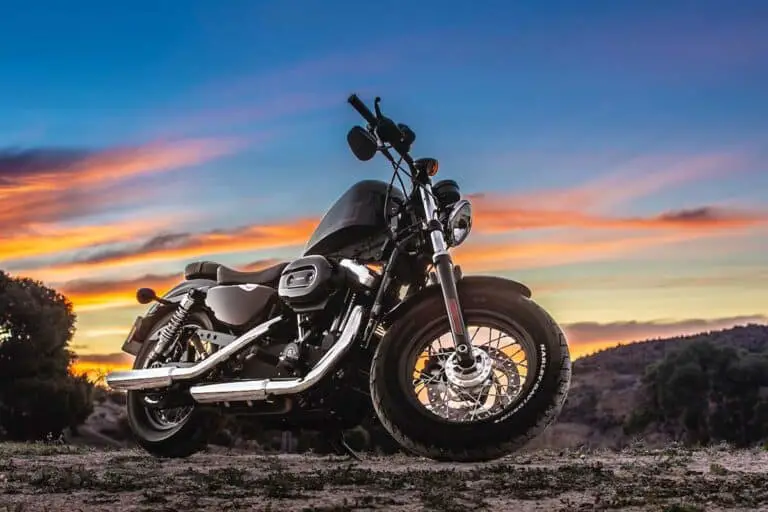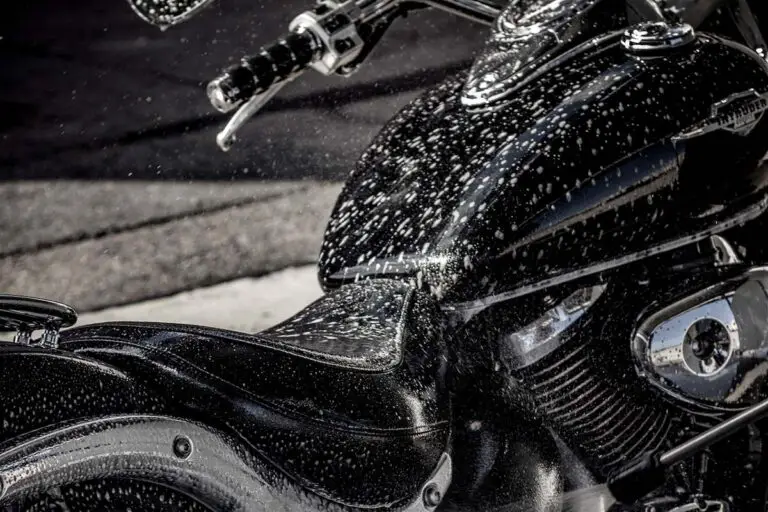How Long Do Motorcycle Tires Last?
Disclosure: We may get commissions for purchases made through links in this post.
Pneumatic tires have come a long way since their invention by John Boyd Dunlop in 1888. From air-filled inner tubes and spoked wheels, motorcycles now sport multiple tread patterns, high-grade rubber bi-compound, and sturdier radial construction. Heck, Bridgestone even employs nanotech in producing their knobbies!
These recent technologies leave many of us to wonder, “How long do motorcycle tires last?” while others are curious to know, “Is it possible to have only one set of knobbies throughout my lifetime?”
There is no definitive answer, as tire longevity depends heavily on riders and their driving behaviors. Motorcycle tires can last from 1,000 to 30,000 miles. Street bike/touring tires generally outlast high-performance, track day, and racing tires.
Manufacturers can give you information on treadwear warranties specific to your tires. And for the most part, the details they provide are reliable. However, remember that real-life situations, intentional driving habits, and TLC can shorten or extend the life cycle of your knobbies.
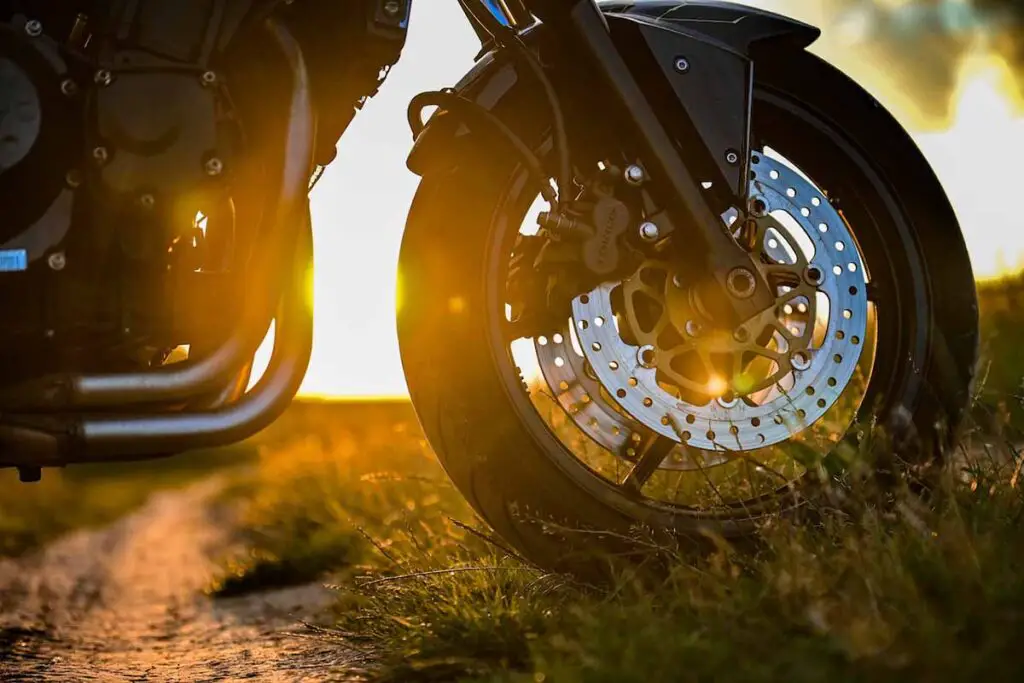
How Many Miles Do Motorcycle Tires Last?
On average, motorcycle tires last between 1,500 and 12,000 miles, given non-aggressive riding conditions and driving behaviors. Period-wise, tread life lasts for 5—6 years or up to 10 years (in case you wonder how long motorcycle tires last in storage).
But then again, factors affecting longevity are not confined to these two. So to answer this question more in-depth, let’s look at some of the best motorcycle tires and their tread-life warranty. The table below should give you an idea of the longest-lasting motorcycle tires in the market:
| Category | Top Brand/s | Tread-Life Warranty |
|---|---|---|
| Street | Pirelli Diablo Rosso IV | 2,000—6,000 miles |
| Scooter | Shinko SR426 or SR568 Scooter Motorcycle Tire | up to 5,000 miles |
| Sport | Michelin Power 5 | 2,000—5,000 miles |
| ADV/Dual-Sport | Dunlop Trailmax Mission | up to 8,000 miles |
| Hyper-Sport/Performance | Michelin Pilot Super Sport | 30,000 miles |
| Touring | Avon Cobra Chrome | 15,000 miles |
| Cruiser | Michelin Commander III | up to 25,000 miles |
| Sport-Touring | Metzeler Roadtec 01 SE, Kenda KM1 Sport Touring | 6,000—8,000 miles |
| Off-Road | Dunlop D606 | 1,000—4,000 miles |
| Motocross | Bridgestone Battlecross X40 | 1,200—24,800 miles |
Another thing to note about tire longevity is that it plays out differently between the front and rear tires. Given moderate driving and routine servicing, front knobbies last at least twice as long as rear ones.
The reason for this is that the rear tire carries approximately 67% of any bike’s payload capacity — in addition to taking the brunt of having rear suspension (among others).
A multitude of factors are at play when it comes to determining the longest-lasting motorcycle tires. I will cover the most significant ones in the succeeding sections.
Choosing Long-Lasting Motorcycle Tires
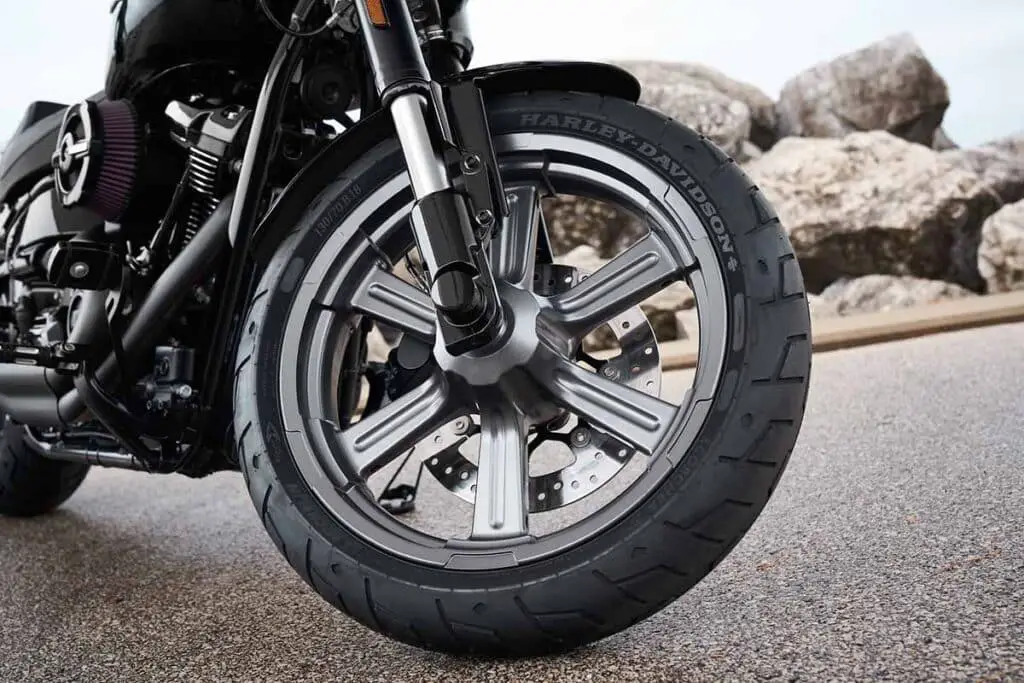
Opting for brands with the best tread warranty is probably the easiest way to select motorcycle tires. However, there is more to them than just numbers (especially if you are after long-lasting ones).
In this segment, let us discover how features, performance ratings, and a bike’s application affect how long motorcycle tires last:
Tire Rating
Those who own vehicles are aware of the UTQG rating that applies to car tires. Developed by the U.S. DOT in 1978, this uniformized system “grades” tires based on treadwear, temperature, and traction. I was searching for its motorcycle counterpart for purposes of this guide — only to remember that there was none.
For those unfamiliar with the term, this grading system only applies to passenger-type vehicle tires. Because motorcycle tires are categorically a non-passenger type, they are not required to undergo such testing.
In lieu of a UTQG rating, what two-wheelers have are the following details plastered on the tire sidewall:
- Speed restriction < 55 mph
- The word “regroovable” (if the tire is designed for regrooving)
- Load range rating indicator (letters from A to Z)
With car tires, a higher UTQG rating is always better. This may not be the case for thumpers — although a higher load range rating can bring you closer to getting long-lasting motorcycle tires.
Construction (Bias, Radial, or Diagonal Cross Ply)
Tires are generally constructed in three ways — bias, radial, and X-ply. Each structure boasts a strength that the others do not have. Bias tires are known for their load-carrying capability. Meanwhile, radials are popular for their reduced flex and lower aspect ratio.
As for X-ply tires, they may not be as comfortable or safe as bias and radials. But without them, the other two variants would have never existed.
Knowing where each type excels is crucial to picking the right pair of long-lasting motorcycle tires. Radial-ply tires, for instance, are perfect for high-sped riding and powerful bikes with rigid chassis.
However, if you do pillion riding and drive at moderate speeds, bias tires like Michelin Commander II Cruisers (view on Amazon) will hold out the longest.
Tread Pattern
Similar to the above, motorcycle tires generally have three groove designs — symmetrical, unidirectional, and asymmetrical. While all patterns enhance grip and prevent slippage, they do so in varying degrees.
If we rate these tires based on tread pattern alone, symmetrical tires would probably rank first. This is mainly because of their groove design, which appears symmetric on both tire halves.
The evenness makes for rotation flexibility and good roadholding mannerisms, helping preserve the good working condition of the tires longer.
Asymmetric tires are not too far behind in durability, although they are better suited for riding in wet conditions. They also work well with sporty-ish two-wheelers and riding that requires good traction and high-curve stability.
Finally, unidirectional tires are great for colder regions due to their enhanced protection against hydroplaning. Their tread pattern is mostly seen on winter/snow and dirt/off-road tires.
Functionally, they may not be as encompassing as the other two. But when mated to the appropriate application, these tires will last longer.
Load Capacity
Load capacity is one of the most significant considerations when selecting long-lasting motorcycle tires. Ideally, the payload limit should match (if not exceed) a bike’s average weight capacity.
If it does not, the tire will get squashed under passenger weight and be prone to premature damage (taking away from its tread life).
As such, riders have come up with a ground rule where a higher load index almost automatically signifies decreased tread life. This makes perfect sense since overloading is detrimental to tire longevity.
Even if riders keep within their motorcycles’ payload capacity, their tire’s load index will still adversely affect tire longevity (more so if the tire in question is rated for high-speed riding).
Weight or Tire Profile
In truth, the weight and profile of a motorcycle tire do not affect how long it will last. But alongside other conditions, it just might. On its own, tire weight is almost insignificant. However, it starts to matter when things like load capacity and tire pressure are thrown into the pot.
A considerably hefty sportbike with a 2-Up layout would need an equally robust and weighty tire with a matching load capacity. It would be folly to pair it with knobbies sized at minimums (and under-inflated at that). If you do, the tires would most likely wear out faster than their tread warranty end date.
Application / All-Roundedness
Lastly, if we measure tire longevity from how frequently we use tires in a year, all-season tires would wear out faster than task-specific variants. After all, they are not swapped out unless when replaced. Meanwhile, winter/snow tires like Metzeler Roadtec 01 Rear Tires (view on Amazon) are used seasonally.
But if we measure the same based on the intended application, all-season tires would hold out longer.
While all-season tires meet the road more often, their design is meant for city driving and the occasional off-road adventure. Sport and snow knobbies are task-specific, yes. But they are also subject to more terrain and rider abuse.
To add, they are made to conquer rock-strewn paths and skid-prone surfaces, offsetting their tougher construction.
With these criteria, it would be difficult to determine which pair of tires would last longer than the other. Hence, I recommend opting for motorcycle tires that best suit how you enjoy your two-wheeler.
When to Replace Your Knobbies
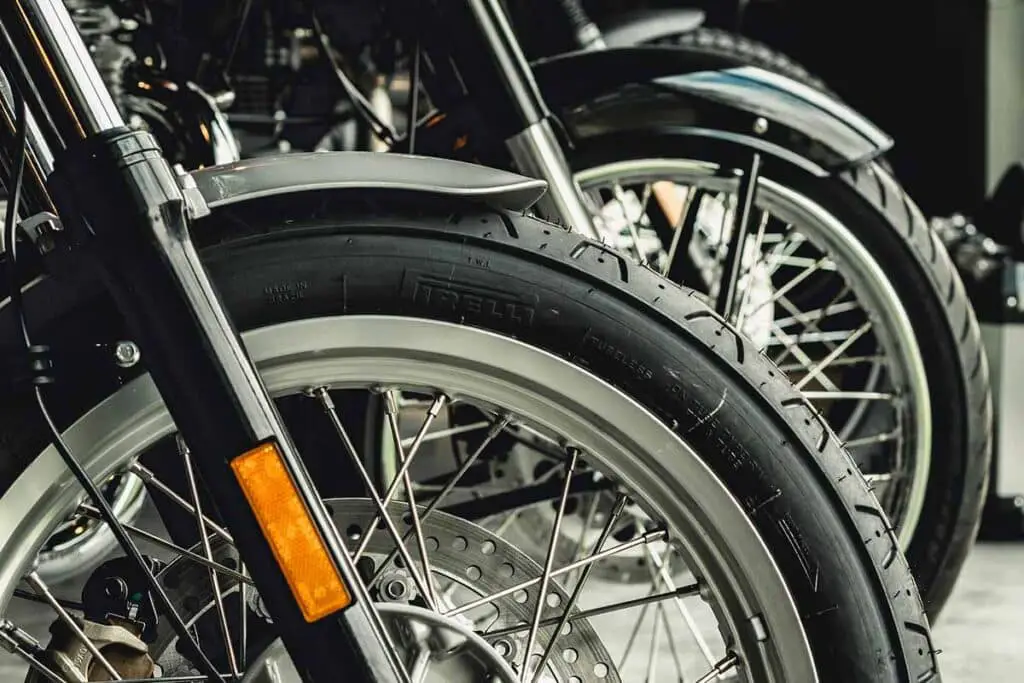
Ideally, using your tire’s tread warranty as a baseline for scheduling your next tire purchase should suffice. However, we motorheads do not live in a perfect world.
At some point, we will encounter a roadblock (figuratively and literally!) that will adversely impact the longevity of our tires.
Since this happens sooner than anticipated for most of us, it is essential to recognize when a tire is screaming replacement.
Here is a non-exhaustive list of markers telling us it’s time to bid our old knobbies farewell:
- Visible tread wear indicators
- Any tire damage (resolved or otherwise)
- Wobbling or chattering not caused by bent axles, scalloping, or normal wear and tear
- Treadwear less than 2/32 of an inch in any area of the tire
- Uneven wear or unevenly flattened cross-section
- Missing tread blocks
- Puncture — either on the sidewall or measuring over 0.25 inches
- Cuts, bulges, or slices on the tread and any other part of the tire
- Tires older than your 4th grader (check the sidewall for a 4-digit code indicating your tire’s birthday)
- Over-exposure to UV or fluorescent lighting resulting in cracks around the tire circumference
- Severe feathering caused by improper alignment settings
- Tires run while severely under-inflated and start to develop damage that looks like a “circumferential ring.”
- A flat tire (obviously!)
Conclusion — How Long Do Motorcycle Tires Last?
The key to maximizing the tread life of your motorcycle tires is to be on the offensive — by doing preventive maintenance — instead of playing defense to tire-related problems.
It may feel bothersome at first. But once the best practices turn into habits, you will thank yourself later for sparing you from unnecessary headaches and expenses. Remember to follow the 5—10 rule — only use your tires for up to five years and up until 10 years (when properly stored).




